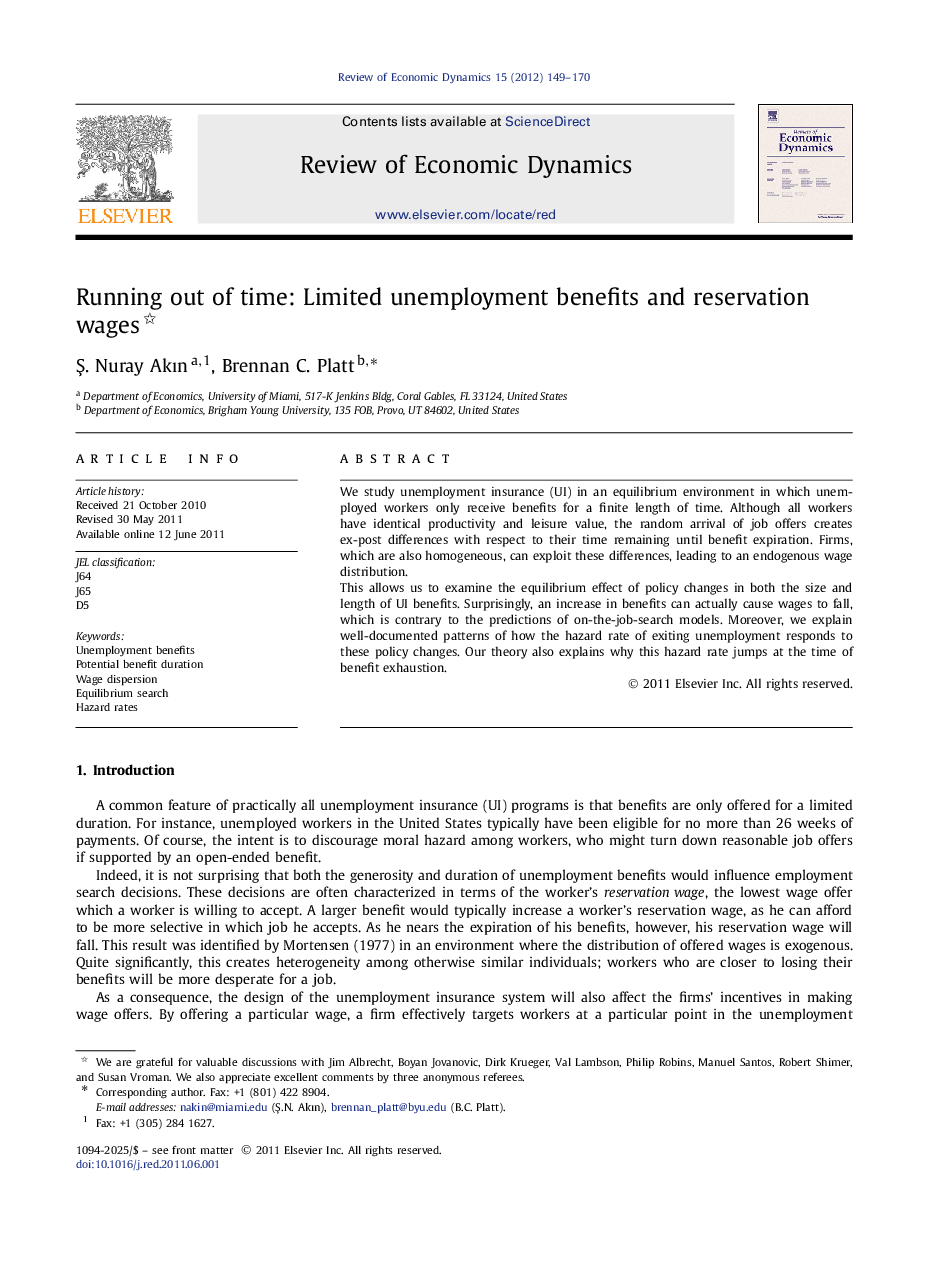| Article ID | Journal | Published Year | Pages | File Type |
|---|---|---|---|---|
| 986979 | Review of Economic Dynamics | 2012 | 22 Pages |
We study unemployment insurance (UI) in an equilibrium environment in which unemployed workers only receive benefits for a finite length of time. Although all workers have identical productivity and leisure value, the random arrival of job offers creates ex-post differences with respect to their time remaining until benefit expiration. Firms, which are also homogeneous, can exploit these differences, leading to an endogenous wage distribution.This allows us to examine the equilibrium effect of policy changes in both the size and length of UI benefits. Surprisingly, an increase in benefits can actually cause wages to fall, which is contrary to the predictions of on-the-job-search models. Moreover, we explain well-documented patterns of how the hazard rate of exiting unemployment responds to these policy changes. Our theory also explains why this hazard rate jumps at the time of benefit exhaustion.
► Unemployment benefits, limited to a fixed time period, create endogenous wage dispersion. ► Our equilibrium conditions can be translated to a system of differential equations. ► Increasing the size of benefits will decrease wages and increase unemployment duration. ► Increasing the length of benefits will increase wages. ► The hazard rate jumps at benefit exhaustion due to a mass of firms offering the lowest wage.
